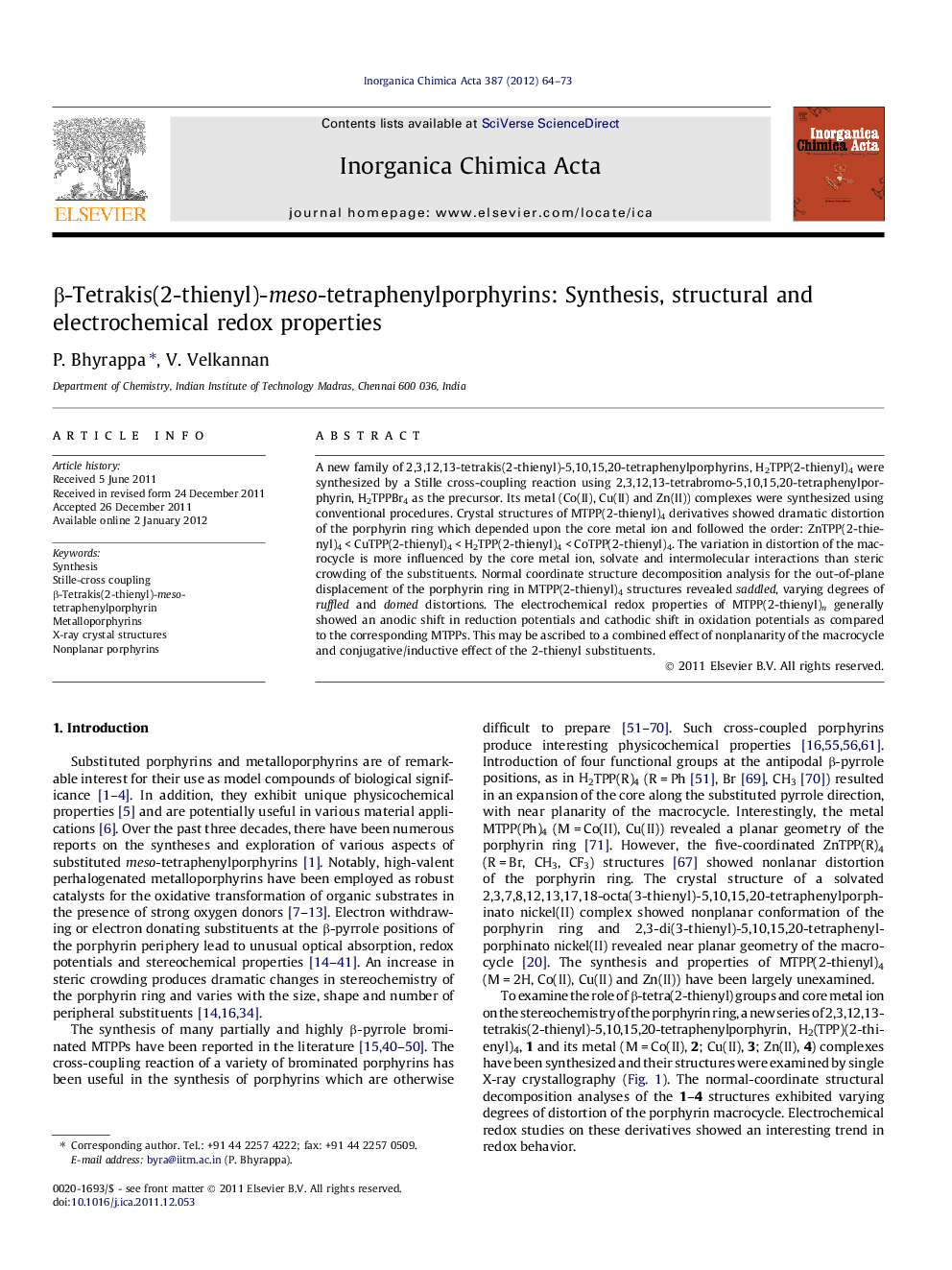| Article ID | Journal | Published Year | Pages | File Type |
|---|---|---|---|---|
| 1310878 | Inorganica Chimica Acta | 2012 | 10 Pages |
A new family of 2,3,12,13-tetrakis(2-thienyl)-5,10,15,20-tetraphenylporphyrins, H2TPP(2-thienyl)4 were synthesized by a Stille cross-coupling reaction using 2,3,12,13-tetrabromo-5,10,15,20-tetraphenylporphyrin, H2TPPBr4 as the precursor. Its metal (Co(II), Cu(II) and Zn(II)) complexes were synthesized using conventional procedures. Crystal structures of MTPP(2-thienyl)4 derivatives showed dramatic distortion of the porphyrin ring which depended upon the core metal ion and followed the order: ZnTPP(2-thienyl)4 < CuTPP(2-thienyl)4 < H2TPP(2-thienyl)4 < CoTPP(2-thienyl)4. The variation in distortion of the macrocycle is more influenced by the core metal ion, solvate and intermolecular interactions than steric crowding of the substituents. Normal coordinate structure decomposition analysis for the out-of-plane displacement of the porphyrin ring in MTPP(2-thienyl)4 structures revealed saddled, varying degrees of ruffled and domed distortions. The electrochemical redox properties of MTPP(2-thienyl)n generally showed an anodic shift in reduction potentials and cathodic shift in oxidation potentials as compared to the corresponding MTPPs. This may be ascribed to a combined effect of nonplanarity of the macrocycle and conjugative/inductive effect of the 2-thienyl substituents.
Graphical abstractSynthesis of a new family of β-tetrakis(2-thienyl)-meso-tetraphenylporphyrins and its metal complexes have been reported. Crystal structures of these derivatives follow the trend in nonplanarity of the macrocycle: Co(II) > 2H > Cu(II) > Zn(II) and their distortions were examined by NSD analysis. Electrochemical studies on these porphyrins showed interesting redox properties.Figure optionsDownload full-size imageDownload as PowerPoint slideHighlights► Synthesis of a new family of MTPP(2-thienyl)4s (M = 2H, Co(II), Cu(II), Zn(II)) have been reported. ► Crystal structures of these derivatives showed unusual trend in their stereochemistry. ► Distortion of the porphyrin ring depend on core metal ion: Co(II) > 2H > Cu(II) > Zn(II). ► Ring distortions were analysed by normal coordinate structure decomposition analysis. ► Electrochemical studies on these porphyrins revealed interesting redox properties.
